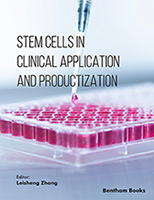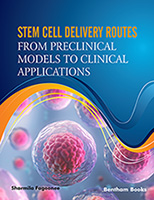Preface
Research on stem cells is progressing with leaps and bounds, transforming the face of medicine as it will be practiced tomorrow. This is reflected in the award of a Nobel Prize to Gurdon and Yamanaka for their seminal contributions in stem cells research. The first volume of 'Frontiers in Stem Cell and Regenerative Medicine Research' features reviews written by experts in important areas of stem cells and regenerative medicine.
In the opening chapter James et al. describe the safety assessment of mesenchymal stem cells (MSC) in musculoskeletal implantation that can bridge the gap between translation from animals to humans. Current practices and techniques are briefly presented across three common types of MSC differentiation: bone, cartilage, and muscle tissue. The authors have emphasized the importance of in depth safety assessments in MSC implantation. The review explores the current laboratory practices for the safety assessments of MSC implantation from several angles such as histopathology, cytopathology and cytogenetics.
Dolnikov et al. in chapter 2 shed light on the prevalent strategies to improve immune reconstitution after haematopoietic stem cell transplantation. Immunologic reconstitution is critically important for the successful outcome of haematopoietic stem cell transplantation. This is because chemotherapy and pretransplant conditioning impairs thymic function. This can lead to delayed T-cell regeneration, increased risk of opportunistic infections and relapse in cases of leukaemia. Administration of γ-chain cytokines such as IL-2, IL-7 and IL-15 can promote immune reconstitution. Moreover, cell therapy appears to be a promising therapeutic approach to improve immune reconstitution after transplantation.
Forsyth et al. in the next chapter discuss the use of alternative biomaterial substrates for human embryonic stem cell culture. These present exciting opportunities for tissue engineering and regenerative medicine. The authors emphasise the use of nanofibrous substrates as an alternative tool for the expansion and differentiation of embryonic stem cells. In future, such technologies could promote the use of hESC-derived cells for clinical applications.
Finally Miguel et al. discuss the applications of regenerative medicine for repair of damaged cornea and ocular surfaces. The novel techniques that have been presented will help to treat patients with autologous grafts, and can prevent the use of precious corneal stem cells. Both limbal and extraocular stem cells have been tested clinically. These techniques for tissue engineering of functional corneal equivalents represent a new and fascinating way to treat corneal diseases.
We would like to express our sincere thanks to the editorial staff of Bentham Science Publishers, particularly Ms. Maria Baig and Mr. Mahmood Alam for their constant help and support.
Atta-ur-Rahman, FRS
Kings College
University of Cambridge
Cambridge
UK
&
Shazia Anjum
Department of Chemistry
Cholistan Institute of Desert Studies
The Islamia University of Bahawalpur
Pakistan





